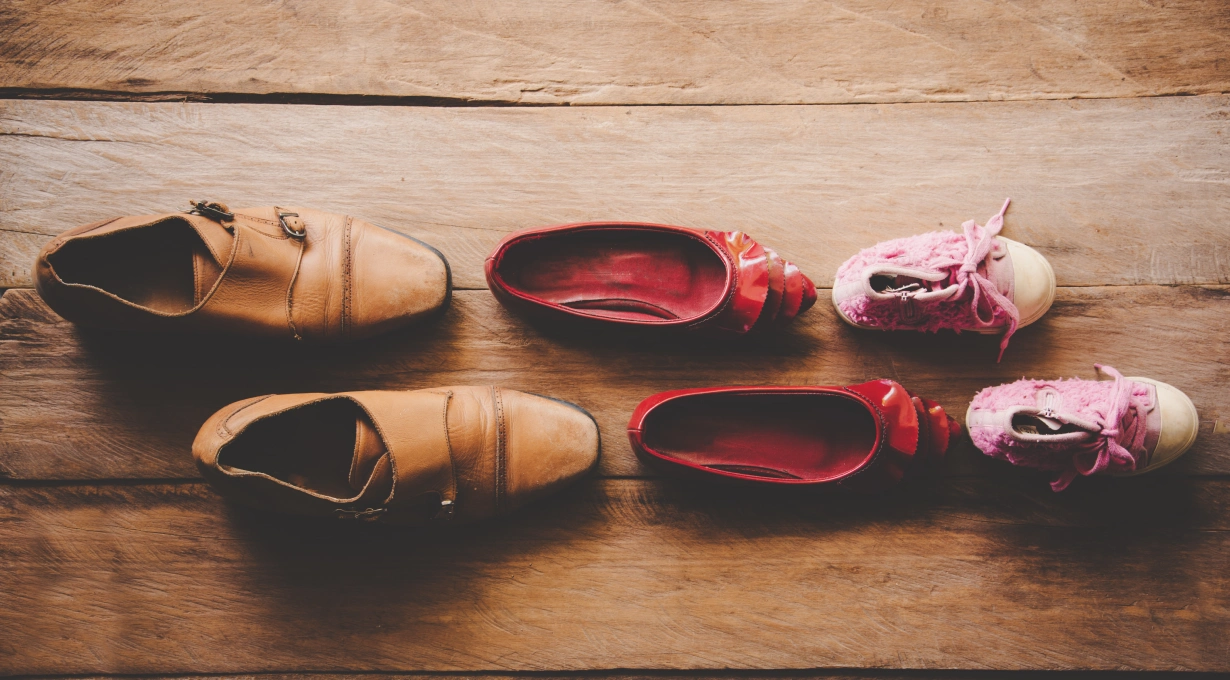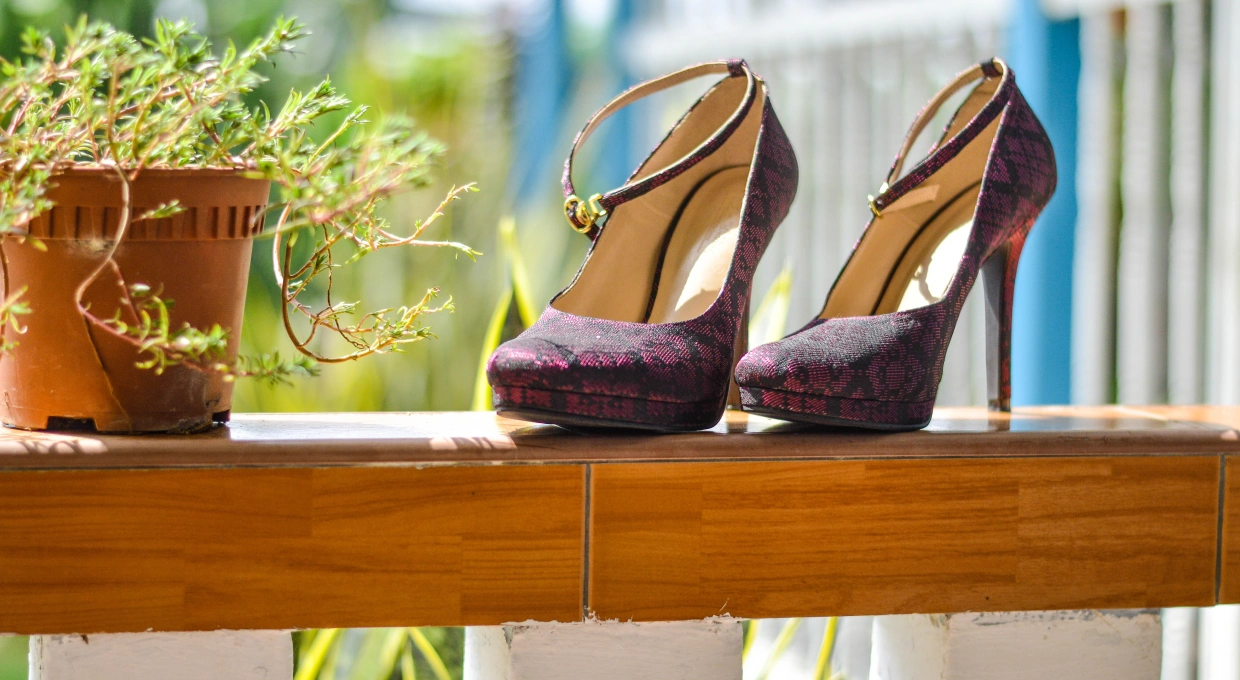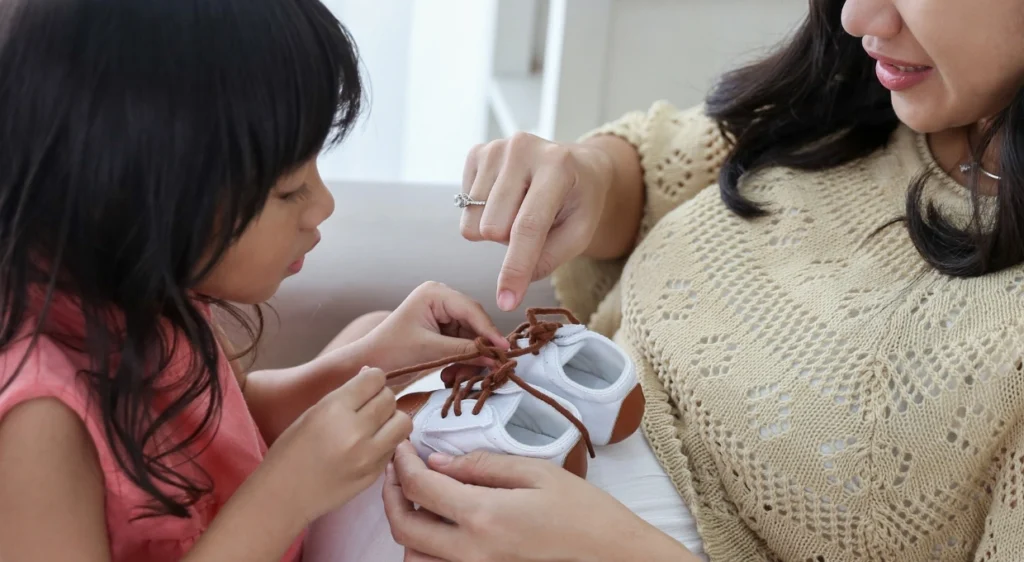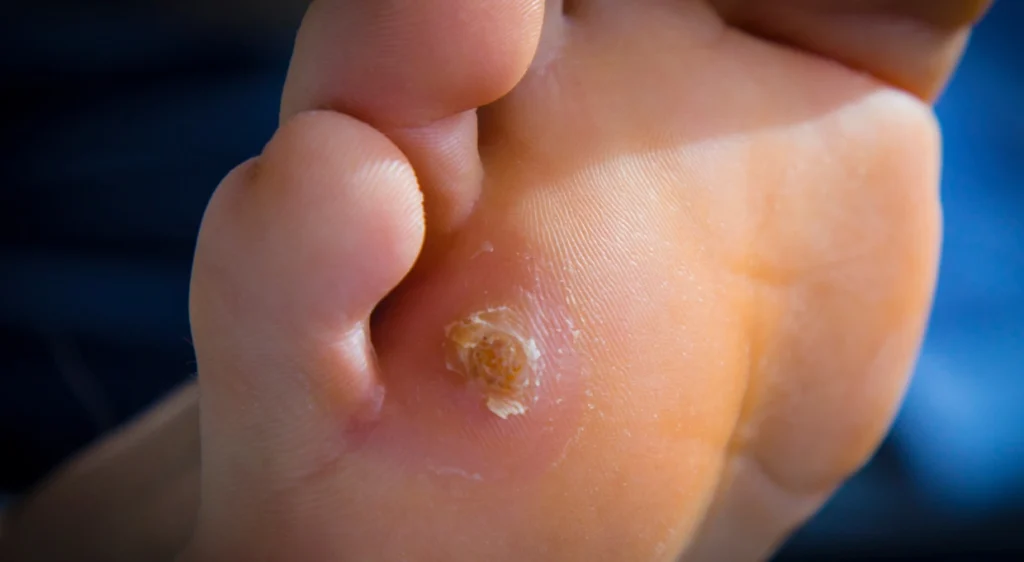The rise of the circular economy and sustainable practices has boosted interest in reusing products, including footwear. However, wearing second-hand shoes can pose certain risks to podiatric health if proper precautions are not taken. At Clínica San Román we analyze the most common problems associated with used footwear, from a hygienic, biomechanical and orthopedic point of view.
Second-hand shoes: hygiene problems
One of the main drawbacks of wearing previously used shoes is the risk of exposure to pathogens. Even if the shoes appear to be in good condition, the accumulation of microorganisms inside can affect the health of the subsequent wearer.
Bacteria and fungi
The moisture and heat inside the shoe create the perfect environment for the growth of fungi and bacteria. When wearing second-hand shoes, it is possible to come into contact with:
- Dermatophyte fungi: cause of athlete’s foot (tinea pedis).
- Onychomycosis: fungal infection of the nails, difficult to treat.
- Bacteria: such as Staphylococcus aureus, responsible for skin and nail infections.
These microorganisms can remain in the insole, seams and fabrics of the shoe, even if the shoe appears to be clean.
Infections and diseases
In addition to fungal and bacterial infections, the use of used footwear can lead to the development of plantar warts (viral papillomas), especially in people with weakened immune systems or open wounds on the feet. Lack of proper hygiene and reuse of closed footwear aggravate the risk.

Wearing second-hand shoes: footprint matters
Each person has a unique footprint. When a shoe is worn that has already been shaped by another morphology, the distribution of pressures on the foot is altered, which can have medium and long-term consequences.
Worn soles
The soles of shoes progressively adapt to the gait of the first wearer. When someone else wears them, the worn-out areas do not match their natural tread pattern, resulting in imbalances and incorrect cushioning. This can lead to walking discomfort, fatigue or even joint pain.
Increased risk of injury
Wearing deformed shoes or shoes with unstable structures increases the risk of sprains, falls or repetitive micro-injuries. This is especially true if they are used for long periods of walking, sports or jobs that require long hours on your feet.
Wearing worn-out shoes: orthopedic consequences
In addition to affecting the footprint, wearing second-hand shoes can contribute to the development or aggravation of orthopedic pathologies in the feet, especially if the footwear does not have good structural support.
Bunions (hallux valgus)
Prolonged use of narrow, deformed or ill-fitting shoes can aggravate bunions, a common bone deformity that causes deviation of the big toe. If the shoe has already given way in certain areas, it pushes the toe into an abnormal position, accelerating the progression of the problem.
Plantar fasciitis and tendonitis
The use of shoes with an already deformed insole or a bad load distribution can generate overexertion in the plantar fascia and tendons of the foot. This favors the appearance of plantar tendinitis, fasciitis or heel pain (talalgia), very common in young adults and active people.
Which shoes should not be inherited?
There are certain types of footwear that, for biomechanical and hygienic reasons, should not be reused under any circumstances:
Children’s shoes
Children’s feet are in full development. Wearing second-hand shoes can condition the growth of the foot, generate deformities or alter the way they walk. In addition, children sweat more and are at greater risk of catching or contracting infections.
Everyday footwear
Shoes that are worn several hours a day (work, school, walking) suffer more internal and external wear. Reusing them without knowing how they were used by the previous person can affect postural and plantar health.
Tips for wearing second-hand shoes
If you decide to reuse footwear, it is important to follow a series of recommendations to minimize risks. Clínica San Román advises you to do so:
Use orthopedic insoles
Fitting a new, customized insole will allow you to adapt the shoe to your footprint and reduce direct contact with the inner surface of the original shoe. It also improves arch support and helps to better redistribute plantar pressures.
Protect your feet with socks
Avoid wearing second-hand shoes without socks, even in summer. Socks act as a barrier against bacteria, fungi and prevent direct rubbing, reducing the risk of irritation or blisters.
Shoe cleaning
Before using second-hand shoes, be sure to clean them thoroughly. Use specific shoe disinfectants, clean the insoles (or replace them) and let the shoe air out completely. Exposing them to the sun or applying dry steam can help eliminate resistant microorganisms.
Conclusion
In short, using second-hand shoes can be a valid practice in ecological terms, but it must be done responsibly. Foot health is key to maintaining overall wellness, and poor footwear can lead to complications that affect your stride, posture and quality of life. If you have doubts about the right footwear or already have discomfort, do not hesitate to visit our podiatry team for an expert assessment.
Make an appointment with our podiatrists and take care of the health of your feet.



